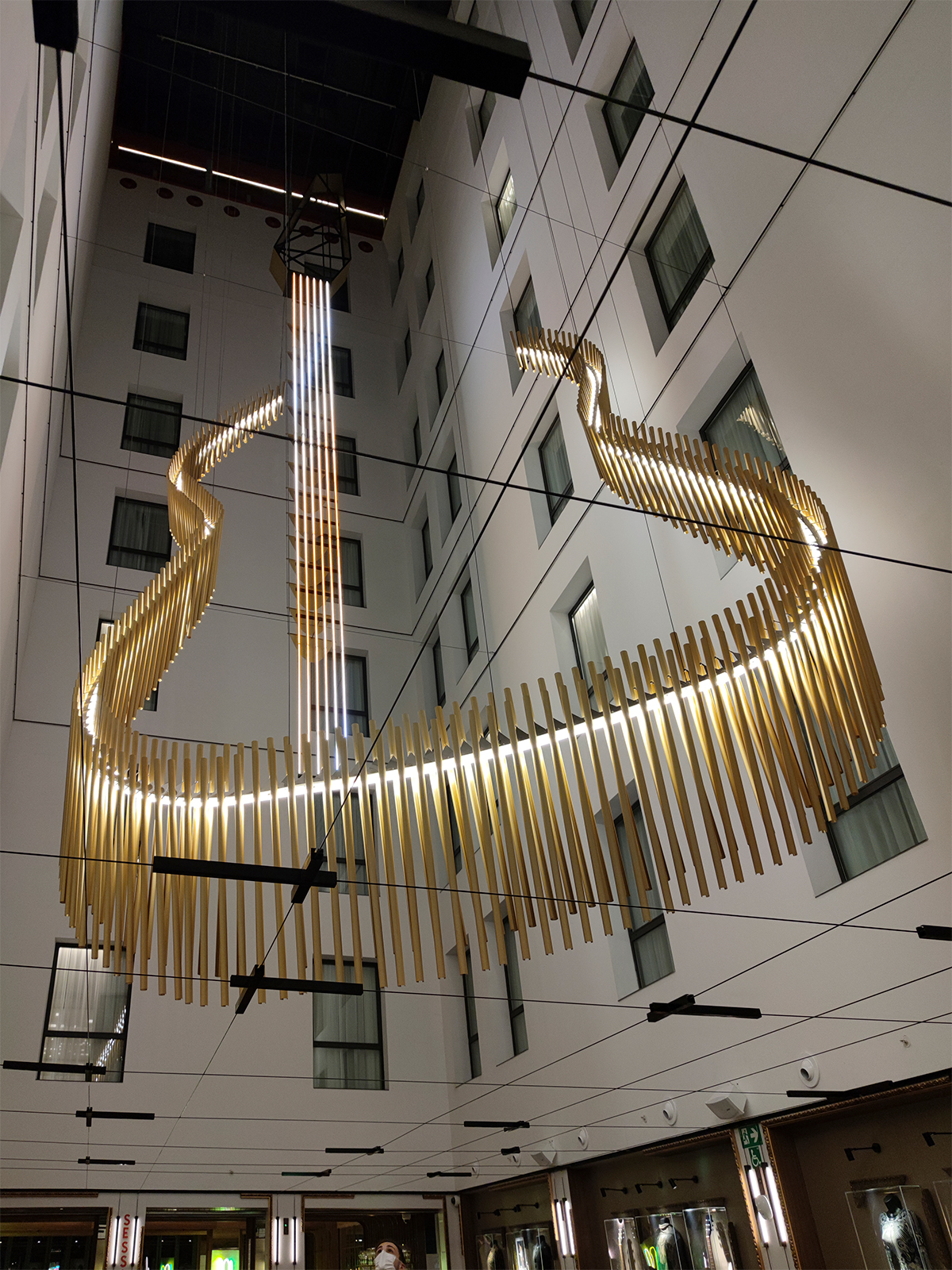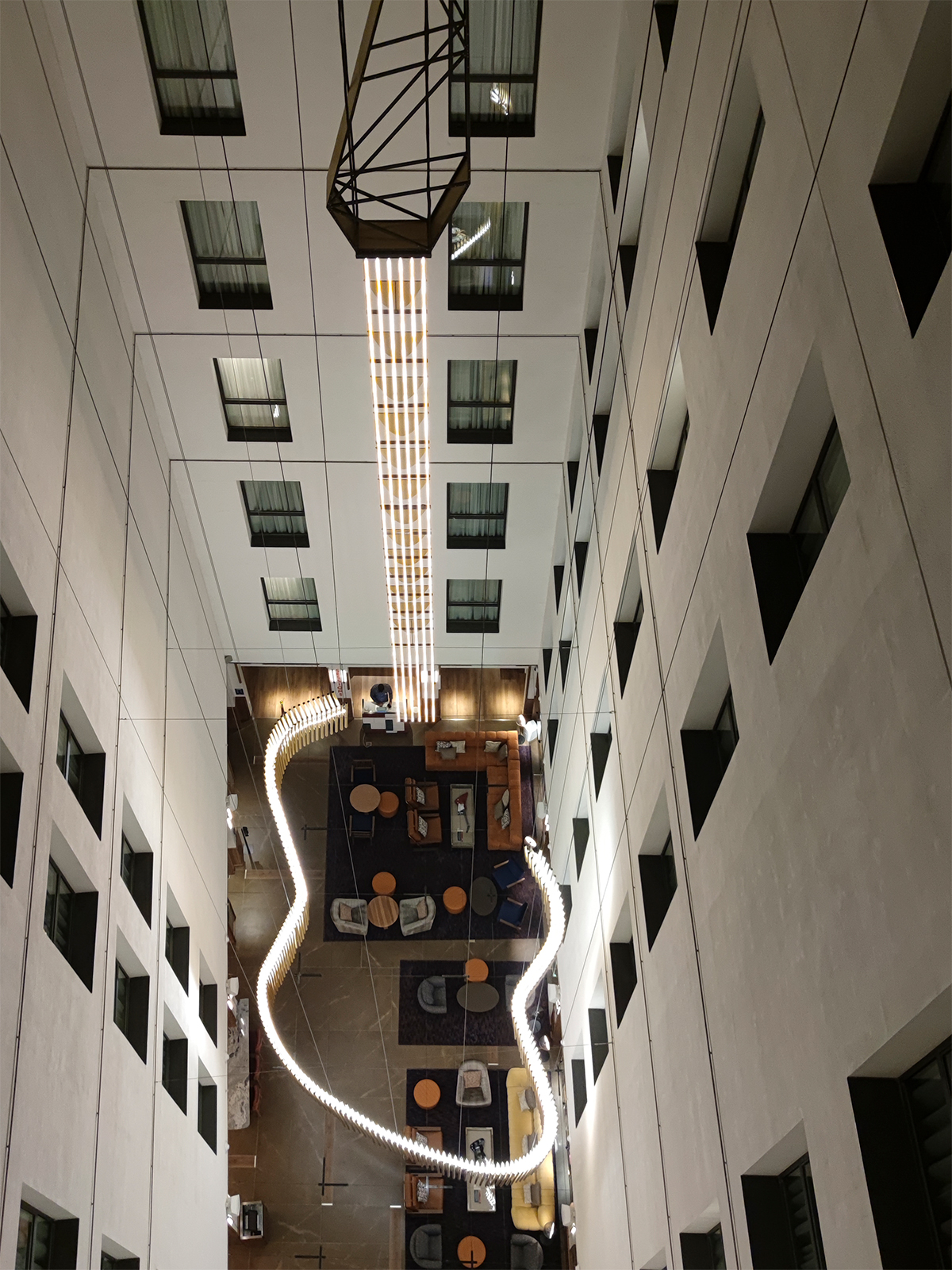An abstract guitar for the new Hard Rock Hotel in Madrid
How we turned a concept into a huge real sculpture
In early 2019, our friends at Rockwell invited us to be part of a project in which we were to shape a huge sculpture inspired by the iconic Hard Rock guitar. They wanted to integrate a large sculptural piece in the central courtyard of the renovation project they were carrying out to transform a downtown Madrid office building into a Hard Rock hotel.
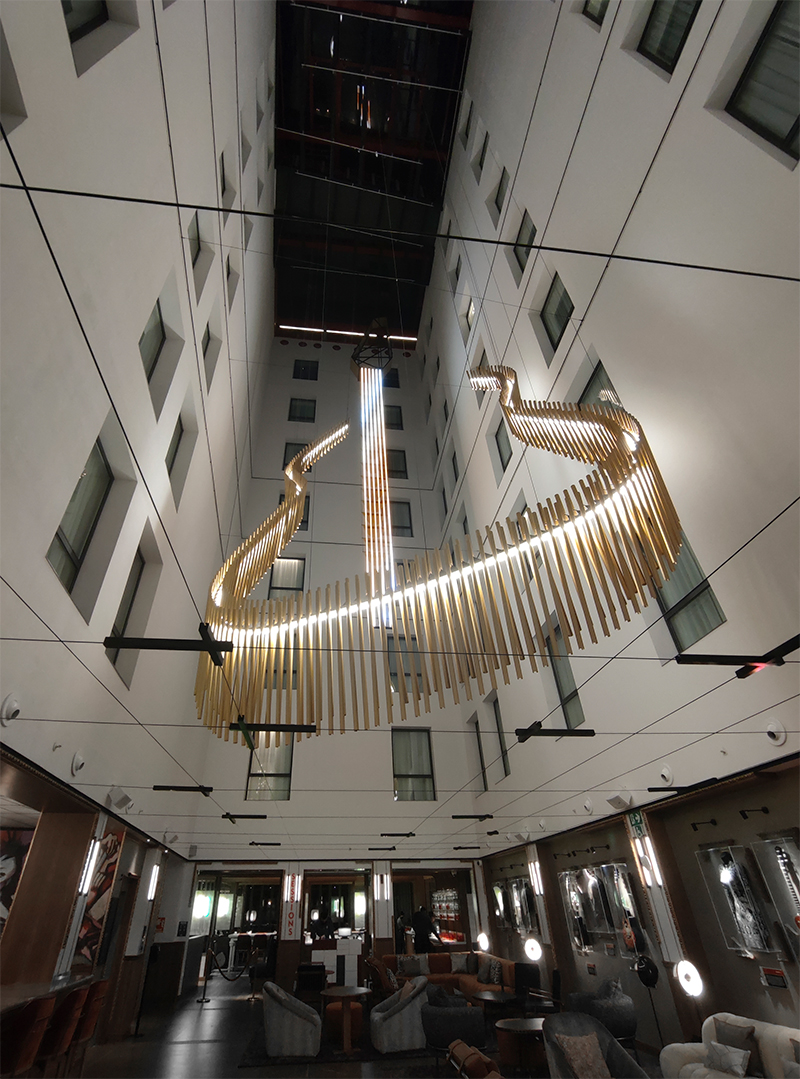
The purpose
The design concept of the new hotel was based on the Movida Madrileña. A cultural phenomenon of the 1980s resulting from the great wave of freedom that invaded the country with the arrival of democracy.
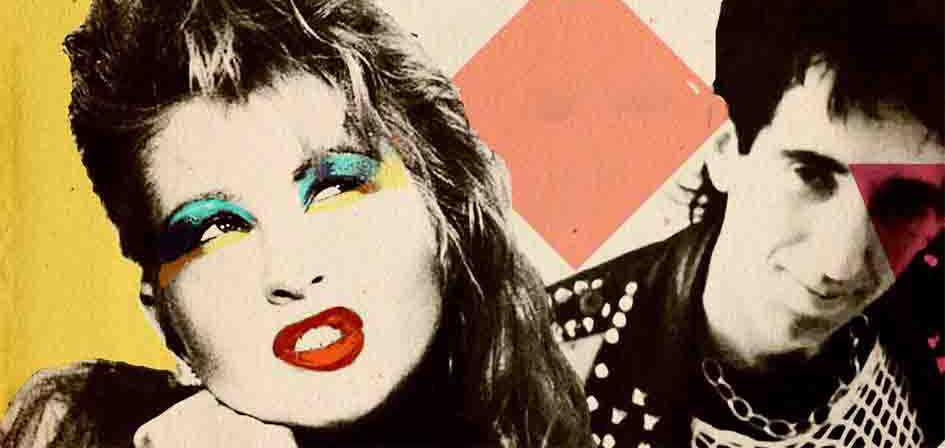
The guitar became a characteristic symbol not only of the Hard Rock brand, but also of the Movida Madrileña, a cultural movement whose most popular aspect was precisely music.
On a functional level, this piece had to be predominant in the space without reducing the natural lighting coming in the building through the patio, it had to catch the eye of the guests to avoid crossed views between rooms, and its maintenance needed to be able to coexist with the life of a hotel that never closes.
Conceptualization
The building to be transformed is structured around a large interior courtyard that was originally exposed to the open air. In the renovation project, the courtyard is covered so that the hotel lobby takes over this space and its large upper volume that most of the rooms overlook.
Rockwell wanted to hang a large sculpture there that would subtly represent Hard Rock’s iconic guitar symbol.
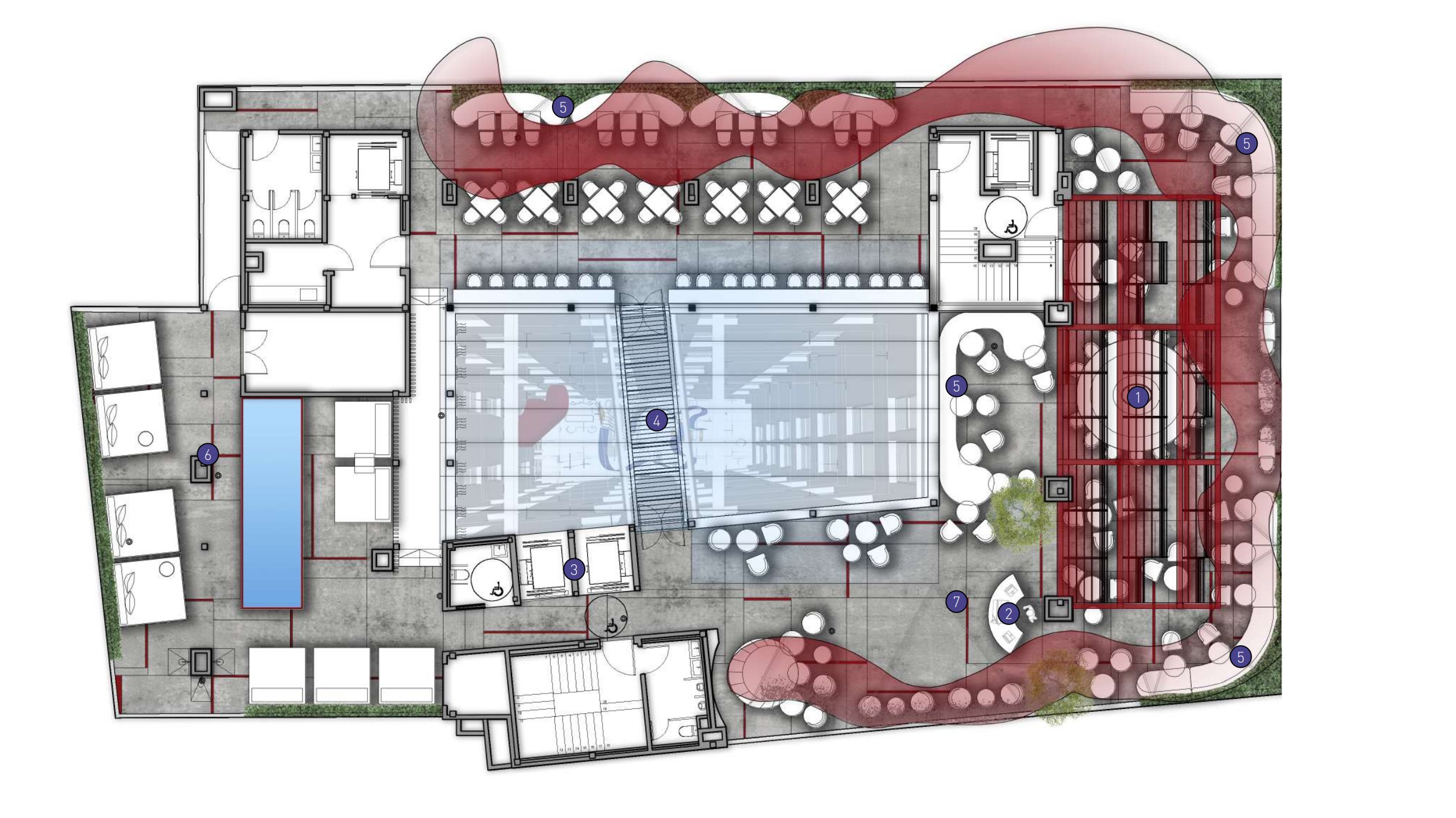
When we were invited to participate in the project, we set ourselves two challenges:
- To represent a guitar in the most synthetic way possible.
- To play with the perception of the large volume of the piece from the different points of view of the observer, as the visitor can not only see it while walking through the ground floor but also observe the piece from the rooms and from the roof terrace.
The work of Jaume Plensa with his deformed volumes, the anamorphic installations of the Swiss artist Felice Varini and the linear sculptures of Rafael Soto helped us to shape our work.
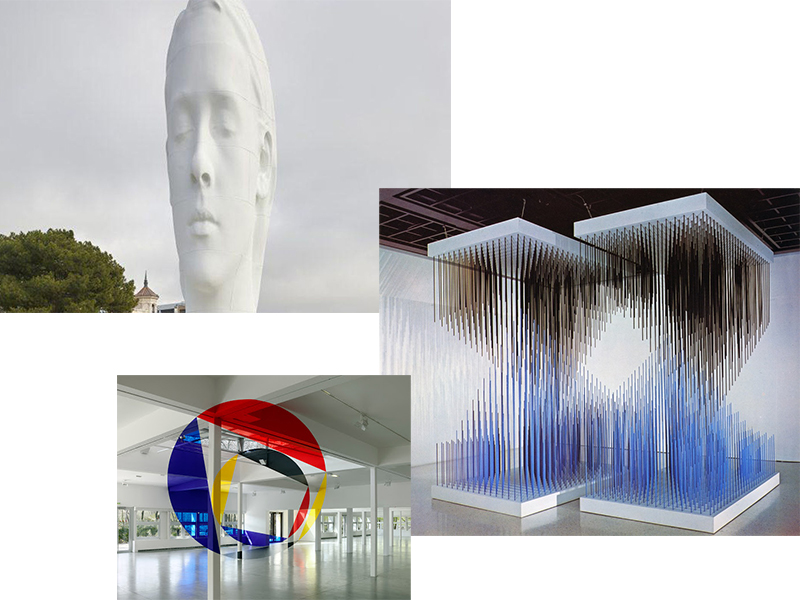
Finally, in such a musical and festive environment, light could not be missing. After considering the possibility of illuminating the piece from the façade of the courtyard, we opted to integrate a subtle dynamic lighting that would make the piece dance and adapt throughout the day to the natural light of the courtyard and to life in the hotel.
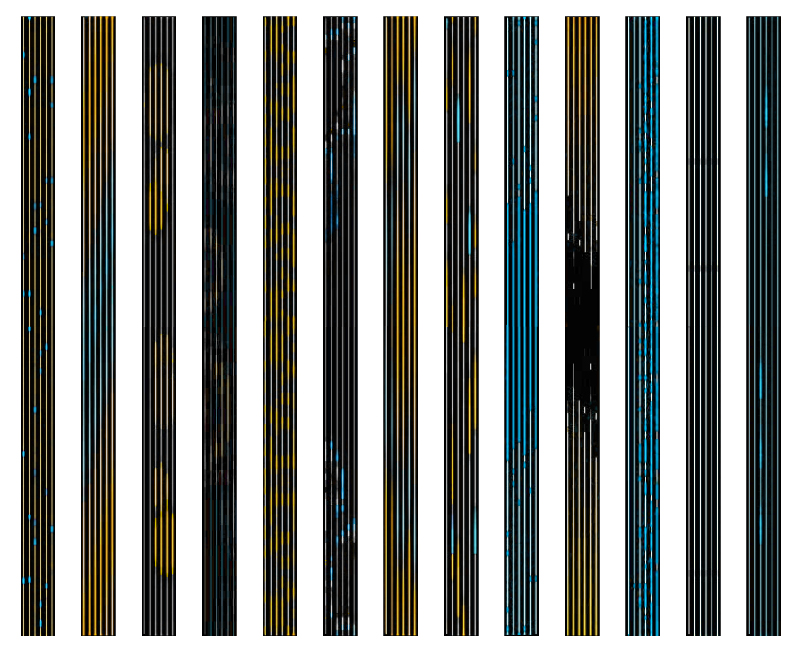
Materialization
After different design proposals, the team jointly decided to build only the mast of the guitar with its strings and headstock, and the line that defines the silhouette of the body.

The mast is placed vertically at the back of the courtyard and the silhouette represents a deformed volume. To achieve this volume, the characteristic curves of the guitar are drawn on a plane with a double tilt. From this inclined plane we hang, vertically, the more than 200 tubes that generate the volume of the case.
The curve that defines the silhouette works in this sculpture as the main structure. Its intersection with the tubes is different for each one of them, so the design of the hanging mechanism becomes certainly complex.
We had to find a way for the tubes to be identical (only different in length) to facilitate their replacement in case they were damaged during assembly. Thus, the piece that serves as a joint between the structure and the tubes had to be parametrically designed and digitally manufactured, adapting exactly to the intersection between the tube and the structure at each point.
To achieve maximum lightness, the tubes fall freely under their own weight and are gently tilted until their centre of gravity is aligned with the hanging point. This way, tubes of different lengths create a double curvature surface in the form of a floating ribbon.
The slot that allows the tubes to be hung by sliding from top to bottom also allows the light that runs around the perimeter of the silhouette to enter the interior of the tubes and make them glow.
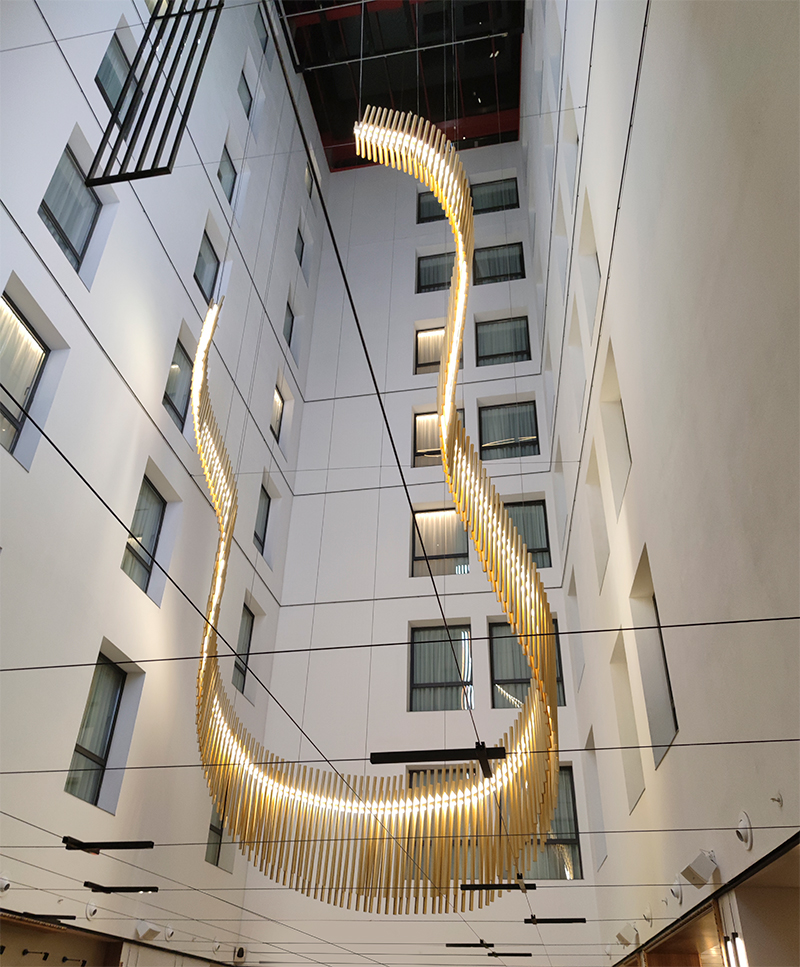
The integration of the light into the piece was a new challenge. In addition to finding a place to run the wiring, we had to ensure an easy maintenance of the elements that would likely need to be replaced.
We dispensed with placing electronic equipment in places that were difficult to access and with making connections in the body of the sculpture, as these are usually the most problematic points.
To support the entire piece, a structure had to be designed at the level of the walkway that crosses the courtyard.
We wanted to find a regular arrangement of the beams that would dialogue well with the regularity of the structure of the building itself. Despite the irregular shape of the guitar’s plan projection.
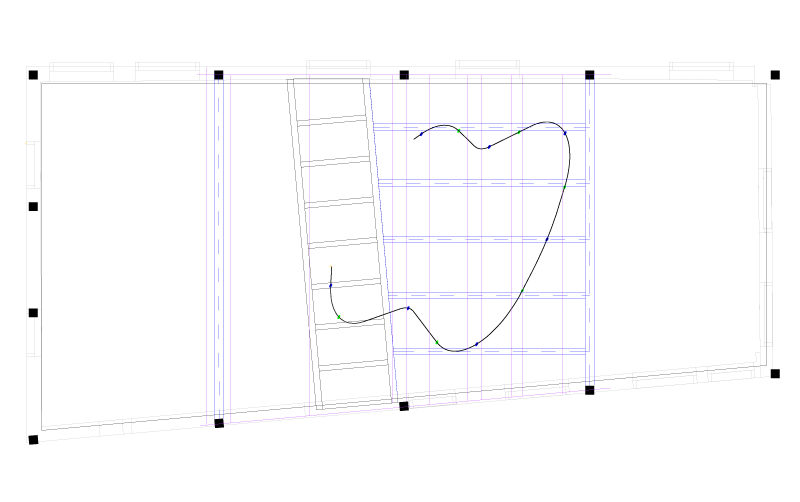
Assembly
Although we carried out the installation ourselves, we did not neglect to develop the detailed installation instructions that characterize our work. These eminently graphic documents depicting the individual assembly steps help us to plan the installation much more precisely.
Since it was a large but lightweight piece, the best way to assemble it was clearly to lift it. The sculpture would be assembled from top to bottom and lifted as assembly progressed. Once the structure was in position and the silhouette tubes had been hung one by one, the last step was the horizontal bracing by means of cables that cross the courtyard in the short direction and prevent the assembly from oscillating.
Result
The guitar is the protagonist of the central space of this new hotel.
The observer first sees the guitar when approaching the reception desk. It is precisely from there that the piece appears with seemingly normal proportions. Once you walk around it or observe it from the rooms or the roof, you discover the complexity of the shape and the details of its materiality.
